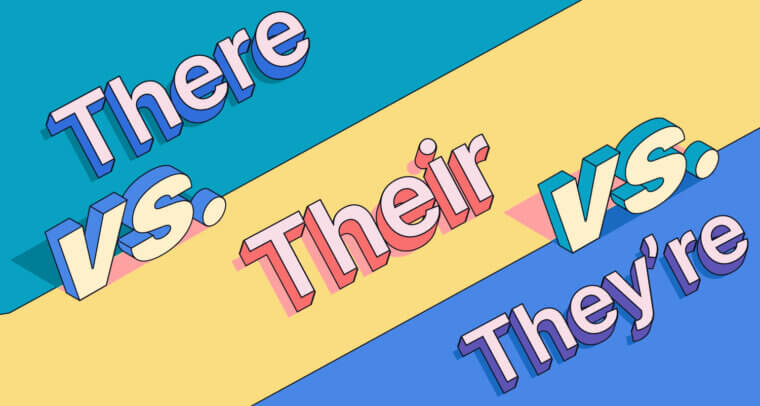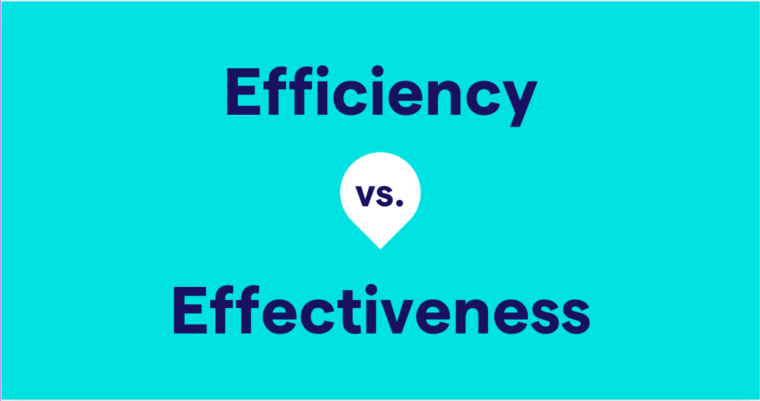
Cite and sight. Flower and flour. Hole and whole. When spoken aloud, these pairs of words sound exactly alike, but they are in fact spelled differently and mean different things, making them homophones.
Meaning “same sounds” in Latin, homonyms can be tricky to identify and puzzling, especially to new students or English language learners. There’s one group of homonyms in particular that stands out for being among the most misused and commonly misspelled words: there, their, and they’re.
If you have a personal list of grammar pet peeves, these words are probably on it, as they’re commonly considered one of the most annoying and frequent linguistic blunders.
Luckily, we’re here to provide a comprehensive resource on the differences between there, their, and they’re so you never mix them up again!
What does there mean?
The simplest definition of there is “in or at that place.” It is usually used as an adverb of place, meaning it expresses where an action is taking place. This is the main quality that sets there apart from the other words in its homonymic trio.
There is often used to denote a specific location:
We will meet there after work and head to the concert together.
The word there can be used to pinpoint locations in the more abstract sense as well.
As my oldest friend, you have been there for me through thick and thin.
Besides its use as an adverb, there can also be used as a pronoun to introduce a clause or sentence. This makes it slightly more complex than their and they’re, as it can be used as two different parts of speech.
There is a chance of rain this afternoon.
What does their mean?
The word their is the possessive form of the pronoun they. Often followed by a noun, their indicates ownership and describes something owned by one or more persons.
The simplest way to remember what’s unique about their is that it denotes possession or ownership. This means that it is most commonly used as a third-person pronoun, describing a noun that is owned by several people.
While Martha and Vinny were on vacation, we dog-sat their two poodles.
Although their is generally used in a plural form, it is also used as a gender-neutral personal pronoun in place of his or her.
Someone left their purse on the subway.
What does they’re mean?
Last but not least, they’re is a contraction that means “they are.” This makes it a little easier to distinguish from its fellow homonyms, as you can always check if it’s the right word by stretching out the contraction into its full form and asking whether it still makes sense.
If you can substitute they are without changing the meaning of the sentence, they’re will also work.
Did you hear they’re both retiring after this school year?
Just like the contractions of you are into you’re and we are into we’re, they’re is a mash-up of two words. It’s important to mention that contractions are frowned upon in academic or formal writing and are more typical in informal communications, like texts or personal notes.
They’re two of my favorite books.
Tricks to remember the difference
If you’re still struggling to remember the main differences between there, their, and they’re, here’s a trick to remember which is which. All you have to do is look at how each is spelled and what other words you can find within them. For example:
- There has the word here in it, which can help you remember that there is used to talk about figurative or literal locations.
- Their has the word heir in it, which means a person who is entitled to inherit property. This reminder of possession or ownership can help you remember that their is a possessive pronoun.
- They’re has an apostrophe, indicating that it is a contraction of two separate words. If you can replace they’re with they are in your sentence and the meaning stays the same, then you’ve got it right.
There, their, and they’re examples
Another great way to distinguish there, their, and they’re is to look over the following examples, which use all three words in a similar context while emphasizing their distinct meanings:
There isn’t enough time. Their group doesn’t have enough time. They’re running out of time.
There is a problem with the car. Their car has a problem. They’re having a problem with the car.
In both of these examples, you can clearly see the different usages and how one word reflects location, one denotes possession, and one is a contraction.
There, their, and they’re FAQs
What are the meanings of there, their, and they’re?
As homonyms, the words there, their, and they’re are all pronounced exactly the same but have different and distinct meanings. There means “at that place” and is used to talk about a specific location. Their indicates ownership and is the possessive form of they. Finally, they’re means they are and is a contraction similar to you’re for you are.
When should you use there, their, and they’re?
If you are introducing a sentence or talking about a certain location, the correct word is there. If you are describing a noun that is owned by someone, the correct word is their, which is the third-person possessive form of they. Lastly, if you want to make the two words they and are into one contraction, they’re is a simpler, shorter version.
Example of there, their, and they’re
- There isn’t enough room for the suitcases.
- Their suitcases are too big.
- They’re leaving the suitcases at home.






